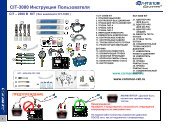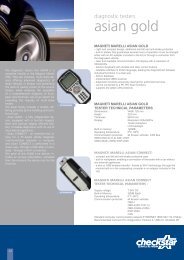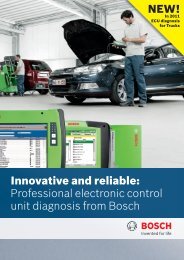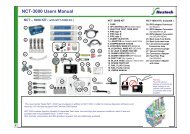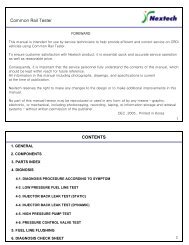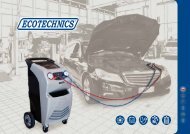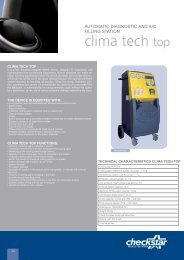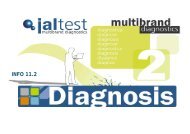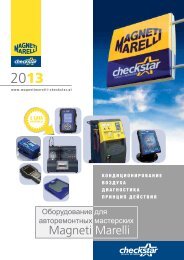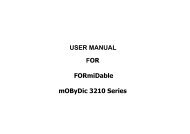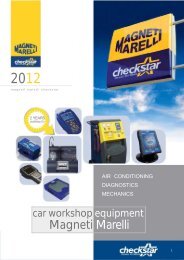Download It - diagtools ltd
Download It - diagtools ltd
Download It - diagtools ltd
You also want an ePaper? Increase the reach of your titles
YUMPU automatically turns print PDFs into web optimized ePapers that Google loves.
LAUNCH<br />
CReaderVI User’s Manual, (c)Launch, www.x431.lv<br />
1. INTRODUCTION<br />
The CReader VI is a game changer in the world of portable Automotive<br />
Diagnostics. Is it a code scanner, or is it a scan tool? The CReader VI blurs<br />
the lines by being the first full color, 4 PID graphing code scanner in the<br />
market. The CReader VI boasts an industry leading 2 frames per second data<br />
capture, while having the ability to store, record and playback over 29 data<br />
files, lasting over 8 hours! The CReader VI is also very easy to use. With<br />
built-in help menus and code definitions, diagnosing and repairing that<br />
dreaded Check Engine Light is now easier than ever! And we don’t stop there.<br />
The CReader VI also features the following bi-directional “special tests”:<br />
EVAP, 02 Sensor, I/M Readiness, MIL Status, VIN Info, and On-board<br />
monitors testing.<br />
NOTICE: CREADERVI MAY AUTOMATICALLY RESET WHILE<br />
BEING DISTURBED BY STRONG STATIC ELECTRICITY.<br />
THIS IS A NORMAL REACTION.<br />
2. General Information-About OBDII/EOBD<br />
2.1 On-Board Diagnostics (OBD) II<br />
The first generation of On-Board Diagnostics (called OBD I) was developed<br />
by the California Air Resources Board (ARB) and implemented in 1988 to<br />
monitor some of the emission control components on vehicles. As technology<br />
evolved and the desire to improve the On-Board Diagnostic system increased,<br />
a new generation of On-Board Diagnostic system was developed. This<br />
second generation of On-Board Diagnostic regulations is called "OBD II".<br />
The OBD II system is designed to monitor emission control systems and key<br />
engine components by performing either continuous or periodic tests of<br />
specific components and vehicle conditions. When a problem is detected, the<br />
OBD II system turns on a warning lamp (MIL) on the vehicle instrument panel<br />
to alert the driver typically by the phrase of “Check Engine” or “Service<br />
Engine Soon”. The system will also store important information about the<br />
detected malfunction so that a technician can accurately find and fix the<br />
problem. Here below follow three pieces of such valuable information:<br />
1) Whether the Malfunction Indicator Light (MIL) is commanded<br />
'on' or 'off';<br />
2) Which, if any, Diagnostic Trouble Codes (DTCs) are stored;<br />
3<br />
Diagtools LTD, www.x431.lv



